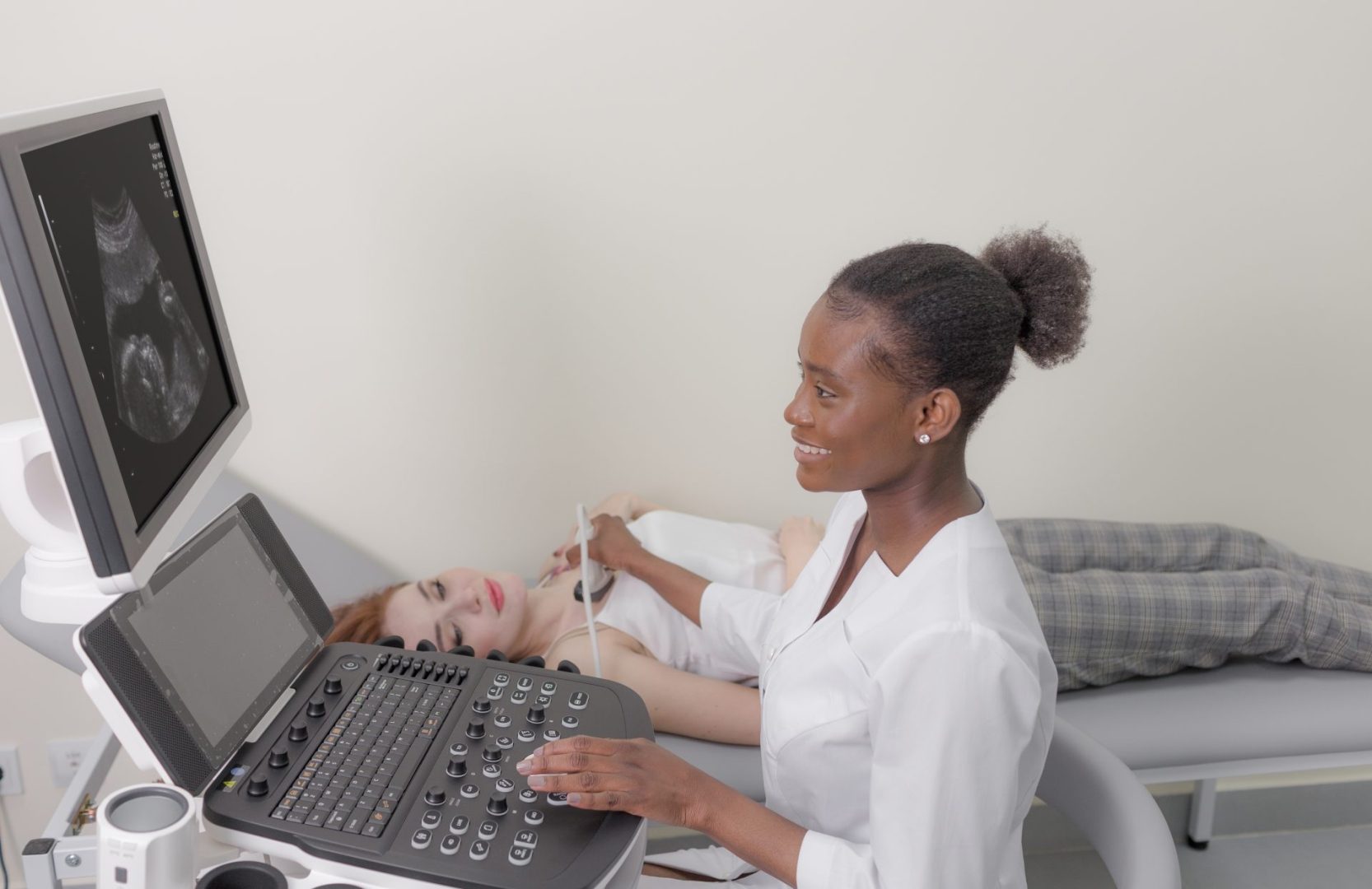Breast health screenings can feel overwhelming, especially when medical terminology and unfamiliar procedures create anxiety about what lies ahead. Understanding breast ultrasounds removes much of this uncertainty by providing clear information about what happens during this common medical test.
A breast ultrasound represents one of the most valuable tools available for examining breast tissue in detail. This painless procedure uses sound waves instead of radiation to create detailed images that help detect changes in breast tissue that might not appear on other types of scans.
Unlike mammograms that compress breast tissue between plates, ultrasounds provide a gentler examination experience while offering unique advantages for certain types of breast tissue evaluation. The technology works particularly well for examining dense breast tissue and distinguishing between different types of breast abnormalities.
Many women receive breast ultrasounds as follow-up procedures after mammograms show areas that need closer examination. Others may have ultrasounds as their primary screening method based on their individual risk factors and breast tissue characteristics.
Understanding what breast ultrasounds can detect
Breast ultrasounds excel at identifying specific types of breast changes that other imaging methods might miss. The technology works by sending high-frequency sound waves through breast tissue and creating images based on how these waves bounce back from different structures.
Fluid-filled cysts appear distinctly different from solid masses on ultrasound images, making this test particularly effective for distinguishing between these two types of breast changes. Cysts typically appear as dark, round areas on ultrasound images, while solid masses create different patterns that help determine their characteristics.
Dense breast tissue, which affects nearly half of all women, can make mammogram interpretation challenging because both dense tissue and potential abnormalities appear white on X-ray images. Ultrasounds provide clearer visualization through dense tissue by using sound waves instead of X-rays.
Small masses located near the chest wall or in areas that are difficult to compress during mammography often show up more clearly on ultrasound examinations. The flexibility of ultrasound positioning allows examination of breast areas that may be challenging to evaluate with other imaging methods.
Blood flow patterns within breast tissue can be assessed using specialized ultrasound techniques called Doppler imaging. This capability helps determine whether masses have the blood supply patterns typically associated with benign or concerning tissue changes.
When medical providers recommend breast ultrasounds
Several situations commonly lead to breast ultrasound recommendations, with many occurring as natural follow-ups to routine breast health care. Understanding these scenarios helps women prepare mentally for what these recommendations might mean.
New lumps discovered during self-examination or routine medical checkups often prompt ultrasound evaluation. Even when these lumps feel different from surrounding breast tissue, many turn out to be normal variations or benign conditions that pose no health risks.
Mammogram results that show areas needing closer evaluation frequently lead to ultrasound examinations. These areas might appear as shadows, distortions, or unclear regions that require the detailed visualization that ultrasound provides.
Women with dense breast tissue may receive regular ultrasound screenings in addition to mammograms because the combination provides more comprehensive breast tissue evaluation than either test alone. Dense tissue can hide small abnormalities on mammograms that become visible with ultrasound.
Breast pain or tenderness that persists or seems unusual may warrant ultrasound evaluation to rule out underlying tissue changes. While breast pain rarely indicates serious problems, ultrasound can provide reassurance by confirming normal tissue structure.
Follow-up monitoring of known benign breast changes often involves regular ultrasound examinations to ensure these areas remain stable over time. This monitoring approach allows early detection of any changes while avoiding unnecessary procedures.
Preparing for your breast ultrasound appointment
Preparation for breast ultrasound involves simple steps that ensure the most accurate results while maximizing your comfort during the procedure. These preparations are straightforward and require minimal advance planning.
Scheduling your ultrasound for the week following your menstrual period, when breast tissue is least tender and hormonal changes are minimal, often provides the most comfortable experience. However, urgent situations may require scheduling regardless of menstrual timing.
Clothing choices can significantly impact your comfort during the procedure. Two-piece outfits allow you to undress only from the waist up, while keeping your lower body clothed throughout the examination. Avoid wearing jewelry, particularly necklaces or earrings that might interfere with positioning.
Skin preparation involves avoiding lotions, deodorants, powders, or oils on your chest and underarm areas on the day of your appointment. These products can interfere with the ultrasound equipment and may affect image quality.
Bringing insurance information, identification, and any relevant medical records ensures smooth check-in and helps the medical team understand your specific situation. Some facilities may require previous mammogram images for comparison purposes.
Mental preparation can be as important as physical preparation. Writing down questions beforehand ensures you remember to ask about anything that concerns you during or after the procedure.
What happens during the ultrasound procedure
The breast ultrasound procedure typically takes place in a dimly lit room that allows the technologist to see the ultrasound images clearly on the monitor. Understanding each step of the process helps reduce anxiety and allows you to participate actively in your care.
Positioning for the examination usually involves lying on your back with your arm raised above your head on the side being examined. This position spreads breast tissue evenly across the chest wall and provides optimal access for the ultrasound transducer.
A clear, water-based gel is applied to either the ultrasound transducer or directly to your breast skin. This gel eliminates air pockets between the transducer and your skin, ensuring clear sound wave transmission and high-quality images.
The transducer, which looks like a small handheld device, is moved systematically across your breast tissue. The technologist applies gentle pressure to ensure good contact with your skin while moving the device to examine all areas of breast tissue thoroughly.
Real-time imaging allows you to see the ultrasound pictures as they’re being created. Many technologists will explain what you’re seeing on the monitor, though they typically cannot provide diagnostic interpretations during the procedure.
The entire examination usually takes between 15 and 45 minutes, depending on whether one or both breasts are being examined and whether any areas require additional detailed imaging. The procedure is generally painless, though some women may experience minor discomfort from the pressure of the transducer.
Different types of breast ultrasound examinations
Breast ultrasounds serve various purposes, and understanding these different applications helps you know what to expect based on your specific situation. Each type of ultrasound examination has particular advantages for different medical scenarios.
Screening ultrasounds are performed on women without symptoms but with risk factors that make additional breast imaging beneficial. These comprehensive examinations systematically evaluate all breast tissue to identify any abnormalities that warrant further investigation.
Diagnostic ultrasounds focus on specific areas of concern identified through physical examination, mammography, or other imaging methods. These targeted examinations provide detailed evaluation of particular regions while often including examination of surrounding tissue.
Ultrasound-guided procedures use real-time imaging to assist with tissue sampling or treatment procedures. The ability to watch the needle placement in real-time ensures accurate targeting of specific tissue areas while minimizing discomfort and complications.
3D ultrasound technology, available at some facilities, creates detailed three-dimensional images that can provide additional information about tissue structure and abnormality characteristics. This advanced imaging may be particularly helpful for evaluating complex tissue changes.
Automated breast ultrasound systems can provide comprehensive breast tissue evaluation with less operator dependence than traditional handheld ultrasound. These systems may be particularly useful for screening women with dense breast tissue.
Understanding your ultrasound results
Breast ultrasound results are typically classified using standardized systems that help ensure consistent interpretation and appropriate follow-up recommendations. Understanding these classification systems helps you interpret your results and know what to expect next.
Normal results indicate that no abnormalities were detected during the ultrasound examination. This finding means your breast tissue appears healthy and no immediate follow-up is needed beyond routine screening recommendations.
Benign findings include tissue changes that are not concerning for cancer but represent normal variations or harmless conditions. Common benign findings include simple cysts, fibroadenomas, and other tissue changes that require no treatment but may need periodic monitoring.
Probably benign results describe findings that are almost certainly harmless but warrant short-term follow-up to ensure stability. These findings typically require repeat imaging in six months to confirm that no changes have occurred.
Suspicious findings require additional evaluation, often including tissue sampling through biopsy procedures. While these results can cause anxiety, many suspicious findings ultimately prove to be benign conditions that mimic more serious problems.
Follow-up recommendations vary based on your specific results and individual risk factors. Your healthcare provider will explain what your results mean and outline the appropriate next steps for your particular situation.
Addressing common concerns about breast ultrasounds
Many women have questions or concerns about breast ultrasounds that can create unnecessary anxiety. Addressing these common concerns helps you approach the procedure with accurate expectations and greater confidence.
Safety concerns about ultrasound are generally unfounded, as this imaging method uses sound waves rather than ionizing radiation. Ultrasound has been used safely in medical care for decades with no known harmful effects when performed appropriately.
Discomfort during ultrasound is typically minimal, though some pressure from the transducer may cause slight discomfort, particularly in tender breast tissue. The procedure is generally much more comfortable than mammography, which requires breast compression.
Accuracy questions often arise regarding how effectively ultrasound can detect breast abnormalities. While ultrasound is highly effective for many types of breast evaluation, it works best when combined with other screening methods rather than used alone.
Cost considerations vary depending on your insurance coverage and the specific reason for your ultrasound. Many insurance plans cover breast ultrasounds when medically indicated, though coverage details should be verified with your provider beforehand.
Time commitments for breast ultrasound are generally reasonable, with most examinations completed within 30-45 minutes including preparation and discussion time. This timeframe makes ultrasound convenient to fit into busy schedules.
Follow-up care after your breast ultrasound
The period following your breast ultrasound involves waiting for results and potentially planning next steps based on what the examination revealed. Understanding what to expect during this time helps manage anxiety and ensures appropriate follow-through with recommendations.
Results timeline varies by facility and the complexity of your case, but most results are available within a few days to a week after your examination. Some facilities provide preliminary results immediately after the procedure, while others require formal radiologist interpretation.
Communication methods for receiving results depend on your healthcare provider’s practices and your preferences. Results may be delivered through phone calls, secure patient portals, mailed reports, or follow-up appointments.
Normal results typically require no immediate action beyond continuing routine breast health care and screening as recommended for your age and risk factors. Your healthcare provider will advise when your next screening should occur.
Abnormal results may require additional testing, which could include repeat imaging, different types of scans, or tissue sampling procedures. While abnormal results can cause anxiety, many ultimately prove to represent benign conditions.
Questions about your results should be directed to your healthcare provider, who can explain findings in the context of your individual health situation and help you understand what the results mean for your ongoing care.
Long-term breast health considerations
Breast ultrasounds often represent just one component of comprehensive breast health care that continues throughout your life. Understanding how ultrasound fits into your overall breast health strategy helps you make informed decisions about ongoing care.
Regular screening recommendations may include periodic ultrasounds in addition to mammograms, particularly for women with dense breast tissue or other risk factors. These recommendations should be individualized based on your specific situation and risk profile.
Self-examination skills remain important even when you receive regular professional breast imaging. Knowing what your breast tissue normally feels like helps you identify changes that warrant professional evaluation between scheduled screenings.
Risk factor assessment should be updated periodically as your health status changes with age and life circumstances. Changes in family history, personal health conditions, or other factors may influence your breast screening recommendations.
Technology advances continue to improve breast imaging capabilities, potentially changing screening recommendations over time. Staying informed about new developments through your healthcare provider ensures you benefit from the most current breast health strategies.
Breast ultrasounds provide valuable insights into breast health while offering a comfortable, safe examination experience. Understanding what to expect from this procedure helps you approach breast health screening with confidence while ensuring you receive the most appropriate care for your individual situation.















